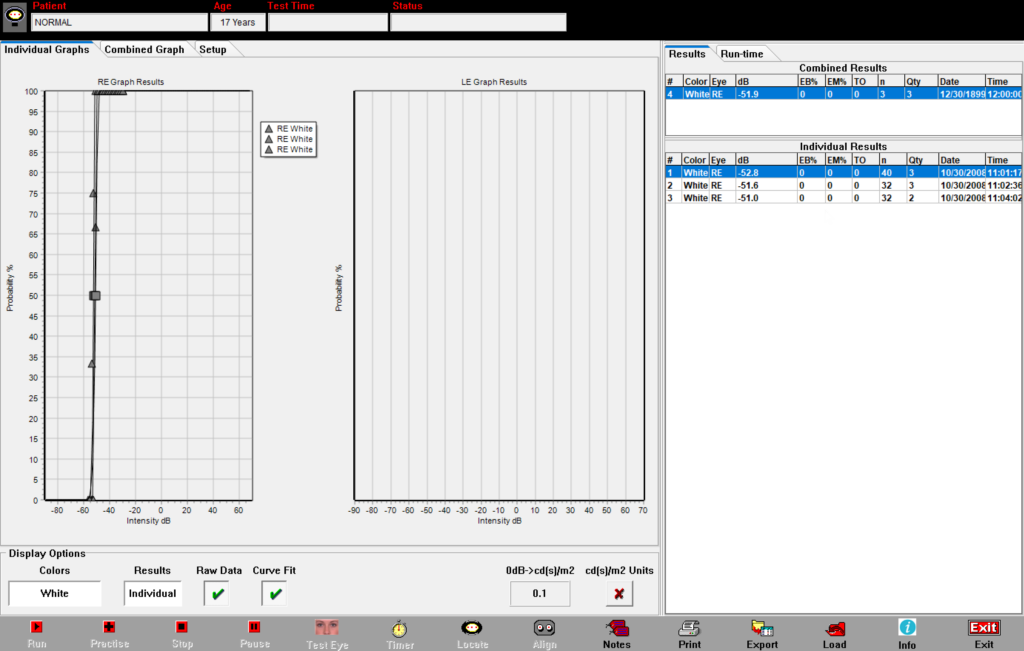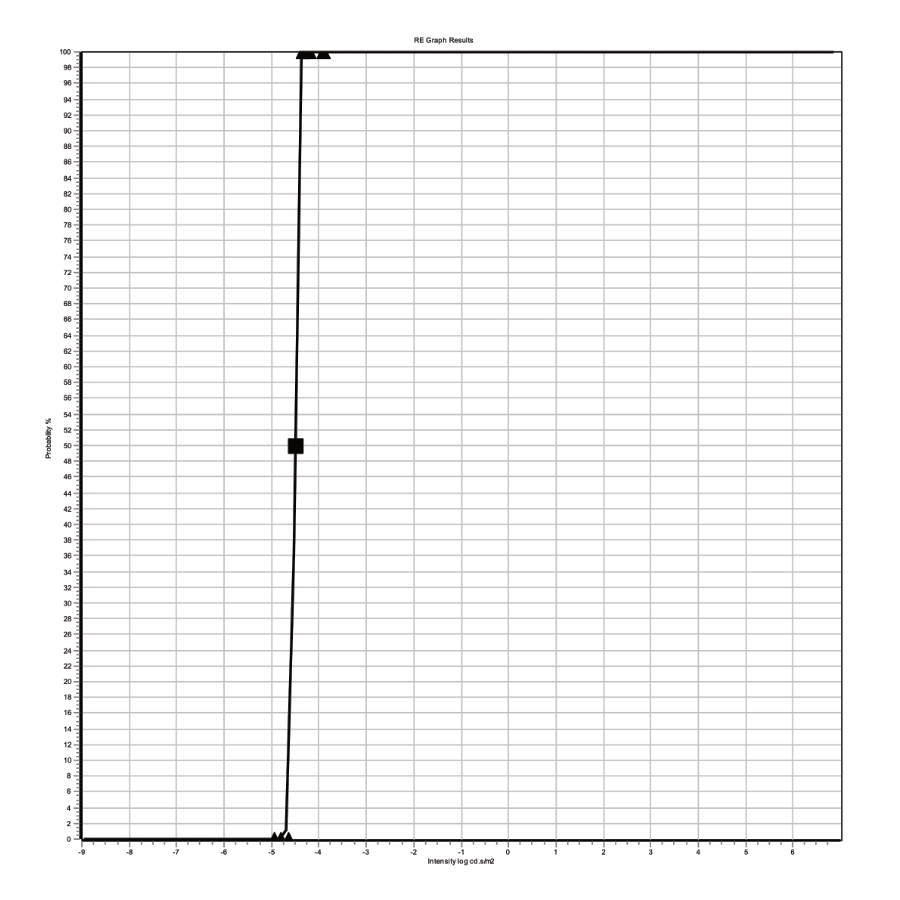The full-field stimulus test (FST) is designed to assess a person’s light sensitivity threshold. This psychophysical test is used to identify the lowest luminance flash that elicits a visual sensation. FST is sensitive enough to quantify low vision when tests such as full-field electroretinography (ERG), visual acuity, perimetry, and microperimetry cannot.

Determine the light sensitivity threshold
In the standard scotopic FST, patients must first fully dark adapt, then they are asked to hold a two-buttoned button box. The test presents a series of flashes; each flash is paired with both an auditory and an optional haptic buzz. For each flash, patients use the button box to respond by pressing either “yes” or “no” based on whether they perceive the light. The FST test functions by automatically adjusting flash intensities until the software accurately measures and reports the subject’s threshold to a flash of light. A threshold is determined within 1-2 minutes.
Differentiate rod and cone sensitives
Since rods are more sensitive to blue light than red light, testing with red/blue stimuli allows for differentiation between rod and cone sensitivities. When differentiation between photoreceptors is not necessary, white light stimuli can be used.

FST threshold interpretation
Results are displayed by color and eye tested. Each threshold is graphed as an individual result, with the X-axis indicating flash intensity and the Y-axis indicating the probability of seeing the flash. The threshold is defined as the luminance which a patient can see 50% of the time. It is denoted by a square on the graph.
The DiagnosysFST® proprietary quality algorithm rates each response on a scale from 0 to 3, ranging from not acceptable to very good.
Diagnosys maintains a list of references to peer-reviewed journal publications that rely on data collected using DiagnosysFST.
New ways to use DiagnosysFST
Variations of the DiagnosysFST now include mesopic and photopic light conditions, in addition to scotopic light conditions. Learn more about these light-adapted sensitivity thresholds. You can also do central field testing using the iMask with DiagnosysFST.
References
Jolly, J.K., Grigg, J.R., McKendrick, A.M. et al. ISCEV and IPS guideline for the full-field stimulus test (FST). Doc Ophthalmol 148, 3–14 (2024). https://doi.org/10.1007/s10633-023-09962-7
Journal publications with data using DiagnosysFST.
